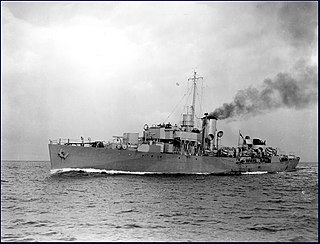
HMCS Sudbury was a Flower-class corvette that served the Royal Canadian Navy during the Second World War. She served primarily in the Battle of the Atlantic as a convoy escort. She was named for Sudbury, Ontario.
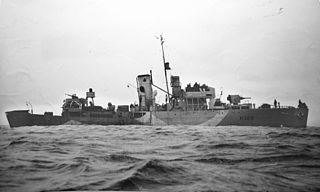
HMCS Kenogami was a Royal Canadian Navy Flower-class corvette that served during the Second World War. The corvette served primarily in convoy escort duties during the Battle of the Atlantic. Following the war, the ship was sold for scrap and broken up.

HMCS Camrose was a Royal Canadian Navy Flower-class corvette which took part in convoy escort duties during the Second World War. She was named for Camrose, Alberta.

HMCS Wetaskiwin was a Flower-class corvette of the Royal Canadian Navy that served during the Second World War. She served primarily as a convoy escort in the Battle of the Atlantic. She was named after the city of Wetaskiwin, Alberta. Wetaskiwin was the first Pacific coast built corvette to enter service with the Royal Canadian Navy.

HMCS Eyebright was a Flower-class corvette that served mainly with the Royal Canadian Navy during the Second World War in the Battle of the Atlantic. She was named after the medicinal flowering plant genus Euphrasia.

HMCS Napanee was a Flower-class corvette of the Royal Canadian Navy during the Second World War. She saw service primarily in the Battle of the Atlantic as a convoy escort. She is named after Napanee, Ontario.

HMCS Shediac was a Flower-class corvette of the Royal Canadian Navy during the Second World War. She served primarily in the Battle of the Atlantic as a convoy escort. She was named after the town of Shediac, New Brunswick.

HMCS Prescott was a Flower-class corvette of the Royal Canadian Navy during the Second World War. She served primarily in the Battle of the Atlantic as a convoy escort. She was named for Prescott, Ontario.

HMCS Arrowhead was a Flower-class corvette that was originally commissioned by the Royal Navy but served primarily with the Royal Canadian Navy (RCN) during the Second World War. She fought primarily in the Battle of the Atlantic as a convoy escort. She was named for Sagittaria, which is an aquatic water plant that is sometimes known as Arrowhead.

HMCS Barrie was a Flower-class corvette that served with the Royal Canadian Navy during the Second World War. She served primarily in the Battle of the Atlantic as a convoy escort. She was named for the city of Barrie, Ontario.

HMCS Dunvegan was a Flower-class corvette that served with the Royal Canadian Navy during the Second World War. She served primarily in the Battle of the Atlantic. After the war she was sold to the Venezuelan Navy. She was named for Dunvegan, Inverness County, Nova Scotia.

HMCS Fennel was a Flower-class corvette that served primarily with the Royal Canadian Navy during the Second World War. Originally commissioned into the Royal Navy, she served as an ocean escort in the Battle of the Atlantic.
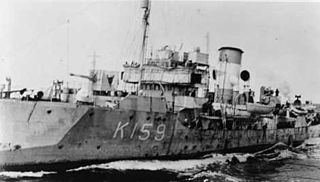
HMCS Hepatica was a Flower-class corvette that served primarily with the Royal Canadian Navy during the Second World War. She saw service in the Battle of the Atlantic as an ocean escort. Originally commissioned into the Royal Navy, she was loaned to Canada in 1941.

HMCS Kamsack was a Flower-class corvette that served with the Royal Canadian Navy during the Second World War. She served primarily in the Battle of the Atlantic as an ocean escort. She was named for Kamsack, Saskatchewan.
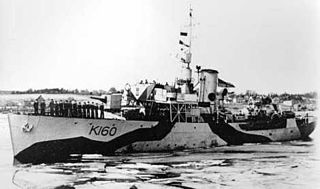
HMCS Lethbridge was a Flower-class corvette that served with the Royal Canadian Navy during the Second World War. She served primarily in the Battle of the Atlantic as an ocean escort. She was named for Lethbridge, Alberta.
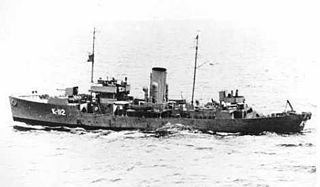
HMCS Matapedia was a Flower-class corvette that served with the Royal Canadian Navy during the Second World War. She fought primarily in the Battle of the Atlantic as an ocean escort. She was named for Matapédia, Quebec.

HMCS Sherbrooke was a Flower-class corvette that served with the Royal Canadian Navy during the Second World War. She served primarily in the Battle of the Atlantic as an ocean escort. She is named for Sherbrooke, Quebec.

HMCS Trail was a Flower-class corvette that served with the Royal Canadian Navy during the Second World War. She served primarily in the Battle of the Atlantic as a convoy escort. She was named for Trail, British Columbia.

HMCS Midland was a Flower-class corvette that served with the Royal Canadian Navy during the Second World War. She fought primarily in the Battle of the Atlantic. She was named for Midland, Ontario.

HMCS Vancouver was a Flower-class corvette that served with the Royal Canadian Navy during the Second World War. She saw action primarily in both Atlantic and Pacific theatres. She was named for Vancouver, British Columbia. She was the second commissioned ship and the third overall to bear the name Vancouver.




















